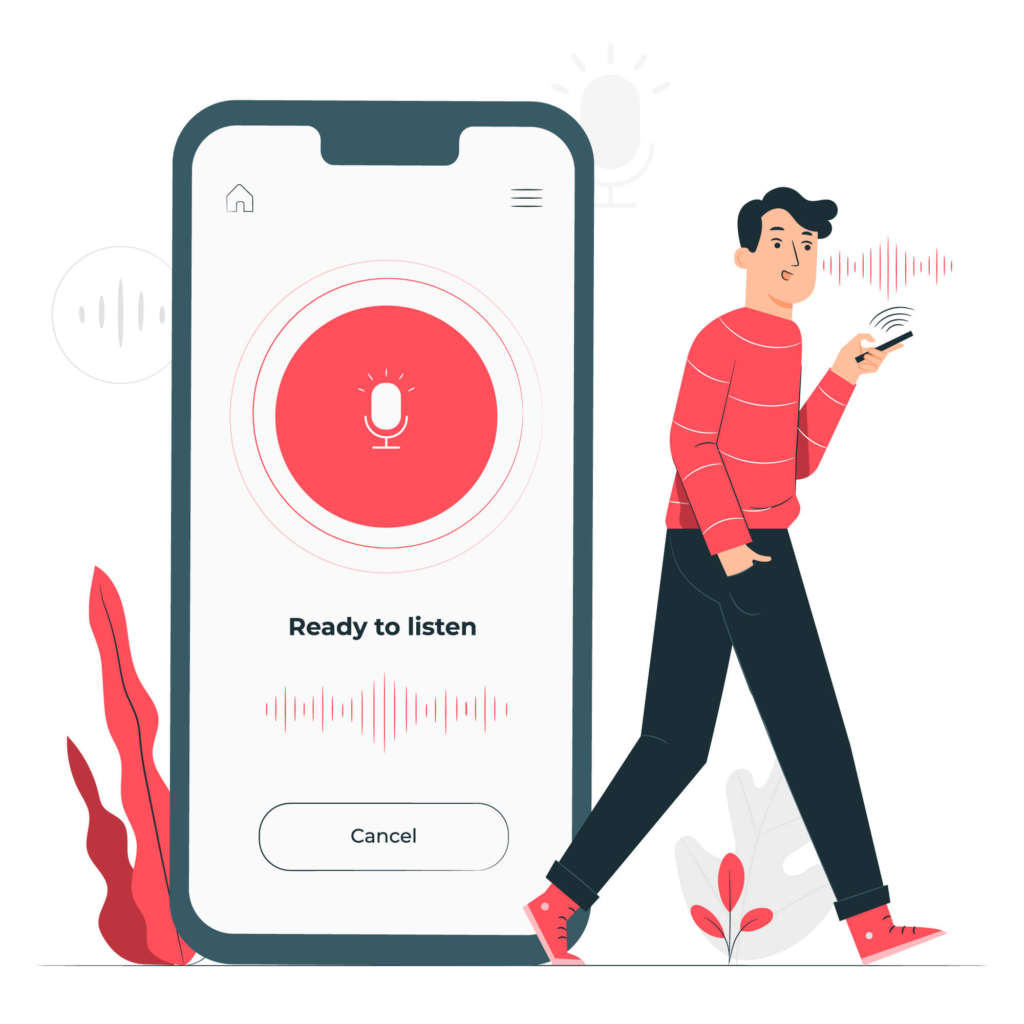
Voice Search in eCommerce: What Does the Future Hold & How to Optimize for It
“Alexa, what is in my Amazon cart?”
“Alexa, I want to buy new shoes.”
“Alexa, when is my order arriving?”
Have you noticed how these phrases have become so common in recent years? We are growing accustomed to using voice commands as opposed to manually typing words.
We live in a world where we want everything to be easily accessible and convenient. Voice search is, therefore, the natural evolution in this regard.
Statista suggests that there will be 8.4 billion digital voice assistants in use by 2024. Therefore, it’s an exciting opportunity for all eCommerce brands to optimize for voice search and voice assistants like Alexa, Siri, Google, etc.
With ever-growing traction for voice-driven user experience, experts predict a further surge in demand in the coming years. Juniper Research forecasts eCommerce transactions via voice assistants to reach $19.4 billion by 2023, rising from $4.6 billion in 2021.
In this article, let’s discuss how voice search will transform eCommerce in 2022. We’ll also touch upon how your brand can optimize for voice search.
What is voice search?
Voice search simply means using speech to search for things or give commands on the internet using mediums like digital devices like smartphones, smart speakers, or apps. A user speaks their requirement directly to the device and the device acts accordingly, be that fulfilling a demand, performing a specific task, or answering a query.
Since it reduces time and effort, voice is quickly becoming the favored mode of communication for people. Instead of having to type long questions or commands, users can simply talk to their devices and get things done.
How does voice search work for eCommerce?

Voice search is primarily based on artificial intelligence (AI) and its capability to transcribe human speech to text.
By giving your customers the option to use their voice, you enable them to search for any product within your online store catalog without any keyboard input. Here’s how the voice search works –
- First, the user gives a voice search command with a key phrase (like Alexa, ok Google, Siri, or your custom key phrase).
- The digital voice assistant then processes the input and transcribes it into text.
- Using AI algorithms, the device then analyzes text and detects questions or commands.
- It then connects to external data sources (or eCommerce database in this case) to find relevant information.
- The data is then translated into a readable format to fulfill the user’s intent.
Here’s an example – If a customer wants to purchase something from Amazon, they will use their smart device by first activating it using the wake-up word. For instance, the customer would say something like “Alexa, order a new shirt.”
The digital assistant will then check the shopper’s buying history and make product recommendations or else suggest something from popular products.
The digital assistant will then mention the price and once the user confirms, it will place an order on their behalf.
Why do brands care about voice search?
Along with the obvious convenience that voice search offers, we have highlighted a few other key benefits that voice search offers. It’s because of these benefits that brands are increasingly looking at offering voice search functionality to users.
a. Quicker and more efficient
The average typing speed is around 40 words per minute. This is on a traditional keyboard and so, on a mobile device, it’s likely to drop further.
Compare this to speaking where you can have three times the speed. So, understandably, voice search is significantly faster. You can complete your search not just quickly but also with a lot less effort.
Moreover, voice search can be easily combined with other activities, making multitasking easier.
b. More convenient
Convenience is one of the key factors that people look out for these days. We have apps that make it easy to get a cab, order food, book appointments, etc. So, offering voice search in eCommerce is a natural progression of that trend.
c. Works well on mobile devices
Mobile devices contribute to about 55% of global website traffic. This figure is only going to increase further which makes voice search obviously more attractive. With a simple tap, users can search for anything without having to type the words.
d. Works well on mobile devices
Voice search can easily personalize the shopping experience based on individual preferences. Since digital assistants are AI-powered, they can analyze user data and make customized suggestions. As much as a 20% increase in sales can be expected through personalized experiences.
e. Enables smart shopping
Since voice search relies on AI, it can be smart enough to capture users’ shopping behavior. It can then make smart recommendations and thus enable smart shopping.
How can brands optimize for voice search?
Now that we are clear about the benefits offered by voice search, let’s talk about ways eCommerce brands can optimize for voice search –

• Optimize site speed
Speed is a critical factor when optimizing an eCommerce website for voice search. A gap of just a few extra seconds can affect your sales. As per a report by Portent, website conversion rates drop by roughly 5% with each additional second of load time.
This means that slow-loading pages can result in the loss of traffic. So focus on improving your site speed as the first step.
• Aim for Google featured snippets
You might already be optimizing for traditional Google search. But to optimize for voice search, you must aim for Google position 0 i.e., the selected featured snippets that Google places at the top of any search results. Having your content featured in Google snippets ensures that it is picked up in the voice search results.
• Optimize for spoken words as opposed to typed ones
A voice search is more likely to be conversational as opposed to a typed search. So people use voice search to ask questions as they do in real life. For example, in a voice search, a user may ask “Where can I find the best deals on shoes?” Brands, therefore, need to optimize for such phrases.
• Use a semantic strategy as opposed to a keyword strategy
The semantic strategy involves focusing on topics that come up in a voice search rather than doing a keyword search. Therefore, you must consider a customer’s intent and think of how they may make a voice search. So, place more focus on natural language, context, and meaning rather than only keywords.
• Build a mobile-responsive eCommerce website
One in every five voice searches is conducted through mobile, meaning it’s critical to optimize your website for mobile. You can do so by optimizing your website’s navigation by using breadcrumbs or using an easier navigation panel.
• Use long-tail keywords
Since voice queries are more conversational, they are particularly longer than text. So, to optimize for voice search, it’s suggested to use long-tail keywords.
• Optimize for questions
A voice search is more likely to be phrased like a question rather than a chain of keywords. So you must take this into consideration and optimize accordingly. Use triggers like Who, What, Where, Why, When, How.
• Add a detailed FAQ page
To optimize your eCommerce store for voice search, you should have a detailed FAQ page. It can save time for the website by enlisting all potential questions together. FAQs are also one of the best ways to get into a customer’s head and answer their queries.
Conclusion
The introduction of voice search has redefined the shopping experience. In 2022 and beyond, voice search will create exciting opportunities for online retailers.
As an eCommerce store owner, you need to ensure that your site is well-optimized for voice search so you can make the most out of voice search.
In the US, people have already become accustomed to using voice search for placing orders and other nations are also quickly catching up. In this current scenario of voice search expansion, your brand can benefit from being the early adopter. The tips we shared can help you get started on the journey of outranking your competition.
Did you like reading this piece? To read more such articles, check out our other blogs.

